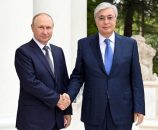Ashfaq Ahmed | Saima Kausar
Profound security changes are taking place in Southeast Asia. Salient features of ongoing security developments include United States (US) is raising region’s strategic temperature by adopting hostile policy towards China. Washington is increasing its military activities in the region for instance QUAD was introduced to raise potential military alliance against China comprising of US, Australia, Japan and India. The Asian Version of North Atlantic Treaty Organization (NATO) was raised in the guise of free and open Indo-Pacific. It facilitates the alliance to dispatch their conventional and nuclear armed submarines, warships and aircrafts to the region.
Washington already maintains it’s hegemonic presence in Southeast Asia by maintaining its military presence at Diego Garcia. This military facility was used for reconnaissance in 1973, Arab-Israel war, to support Gulf War, Afghanistan and Iraq wars. In 2017, Department of Defence released data confirmed stationing of 39,000 US troops in Japan, largest force stationed abroad. South Korean military base is home to 23,500 American soldiers. However, Al Jazeera News published an article on September 10, 2021 on its website claiming that Japan hosts 120 US military bases house to 53,713 troops. Likewise, South Korea has 73, US military bases with presence of 26,414 American soldiers. Camp Humphreys US largest overseas military camp is also based in South Korea. Further, 7th Fleet helps Pentagon in maintaining floating presence in the South China Sea. US enjoys strategic advantages vis-a-vis China because of advance military technology, war fighting capabilities and intelligence surveillance and reconnaissance (ISR) capabilities. It increases American forces situational awareness, numerical strengths, operational readiness and enhances US deterrent posture.
Despite its heavy military presence in the region US seems dissatisfied. US’s top defence and diplomatic officials are continuously making efforts to get more allies onboard. Relentless efforts are part of Containment of China Policy. Defense Secretary Lloyd Austin’s July, 2021 visit to the Southeast region cannot be neglected. During visit to Singapore Austin urged regional allies to adopt “integrated deterrence” in pursuit to reduce China’s military activity in Southeast Asia. U.S. Defense Department explained “integrated deterrence” means using “every military and non-military tool in lock-step with allies and partners.” Key takeaway gleaned from the above paragraph is US increased involvement in the region is part of “Containment of China Policy.”
Washington is increasing ties with Southeast Asian nations including Indonesia, Vietnam, Malaysia, Singapore and Philippines are strengthening strategic partnerships with US. This rebalancing strategy will further increase US military’s direct and indirect presence in the region. Southeast Asian states are buying advance weapons to take control or cement their control over illegally occupied territories. Vietnam has already received military hardware and Coast Guard Cutters from US. Philippines military forces are trained with US counterparts. In February, 2022 Biden Administration approved US $ 14 billion sale of up to 36 F- 35 fighter aircrafts and munitions to Indonesia in pursuit to contain China. State Department lauded this arms sale by stating that arms sale will support US foreign policy goals and national security objectives. Inferences drawn from above passages are US Southeast Asia policy is solely orchestrated to contain China. Primary purpose of this strategy is to slow-down China’s rise if containment is not possible. However, US is cautiously implementing its conflictual policy to avoid direct confrontation with Peoples Liberation Army (PLA). Direct confrontation inherits the potential to invite conventional and nuclear attacks on US mainland. Subsequent conclusion drawn is Washington prefers to bleed China through proxies by remaining in the background to avoid unnecessary critique and condemnation from Beijing and international observers.
Unabated use of proxies is certainly, cost-effective strategy. Manifold objectives include to divert Beijing’s attention from US. Unnecessarily entangle the dragon in regional disputes with militarily and geographically small states. Arms sale to Southeast Asian nations helps Biden administration to provide job opportunities for fellow nations at home, increase administration’s popularity graph, US Gross Domestic Product (GDP) and foreign reserves. Peoples Liberation Army Navy (PLAN) and PLA military engagements helps strategic planners in Washington/Pentagon to understand Chinese warfighting strategies, crises management and conflict prevention methods to devise countervailing strategies. Third, steps taken by Washington is encroachment in Chinese sphere of influence resulting in hampering regional peace and prosperity. Biden Administration is pushing its Southeast Asian allies to choose conflict over conflict prevention and conflict management strategies.
Let’s not forget Biden administration instigated Ukraine to adopt conflicting policy vis-à-vis Russia. It resulted in war that wreaked havoc in Ukraine. Certainly, in case of hostilities and full-scale war between China and any of its neighbors US will not come to rescue Southeast Asian ally. South China littoral states should draw conclusion from Ukraine war that US hallow security assurances cannot be trusted. Strategic changes taking place are slowly and gradually increasing mutual distrust, hostilities and exacerbating direct and indirect threats to regional peace, development and national securities of regional stakeholders.


